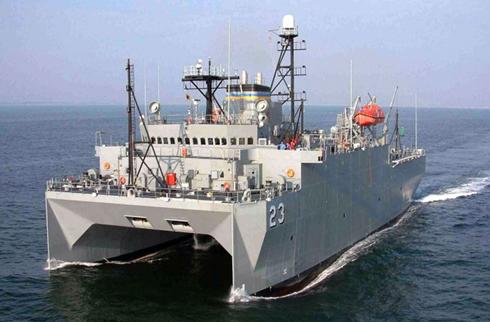
Training areas already are established along most of the continental U.S. coastline, so the Navy is seeking federal permits to broaden an existing range off the Pacific Northwest and dramatically expand exercises and sonar use in the Gulf of Alaska.
The service also plans to increase training substantially in the Pacific around the Mariana Islands.
The Navy estimates in federal permit applications that its activity in those areas will impact about half a million sea mammals each year, including seals, sea lions and whales, some of which are endangered.
The effects range from brief interruptions in normal feedings to significant injury and, in very rare instances, death.
Already, 2.3 million marine mammals are affected similarly each year by the Navy's training on its ranges on the Atlantic and Pacific coasts, Navy studies show.
The studies find that the vast majority of the animals will suffer only a "temporary" disturbance from the training, which can include live-fire exercises, and anticipate no long-term impact on overall marine mammal populations.
However, the Navy's plans have ignited a debate with environmental groups that say the service underestimates the long-term impact of its activities and fails to restrict training sufficiently in marine sanctuaries and other areas where it is likely to affect sensitive species. The plans to expand training off the Pacific Northwest, where the service's exercise areas reach into the Olympic Coast National Marine Sanctuary, have drawn about 3,500 public comments, most in opposition.
Critics of the Navy's plans point to its use of new sonar systems that can disrupt marine mammals' brain function and behavior, noting that even brief disorientation or other "temporary" effects can have serious consequences, such as changes in reproductive activity. Among the most serious concerns is the potential for whales to strand themselves on beaches: Since 2000, there have been at least four instances in which mass strandings of whales have been associated with the Navy's sonar use, federal records show.
"There's been significant growth in the number of hours of exercises and significant expansion into new areas ... but the Navy is doing very little to understand what wildlife they may be affecting," says Michael Jasny, senior policy analyst at the Natural Resources Defense Council. "The Navy says it knows enough to analyze impacts, but it doesn't know enough to recommend any areas within these hundreds of thousand square nautical miles for avoidance."
Navy plans reflect the need for flexibility to train in areas that offer a wide variety of ocean environments, particularly along the seafloor, says John Quinn, deputy director of the service's Energy and Environmental Readiness division.
The Navy tries hard to ensure that its activities have minimal impacts on marine life, Quinn says. He notes, for example, that training is restricted off Florida in areas frequented by endangered right whales during their calving season.



Reader Comments
to our Newsletter